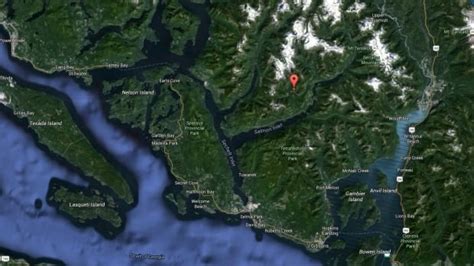Earthquake Strikes Near Sechelt, BC: A Comprehensive Guide to Preparedness and Response
An earthquake near Sechelt, BC, serves as a stark reminder of the importance of earthquake preparedness. While we cannot predict when these powerful events will occur, understanding how to prepare and respond can significantly impact safety and well-being. This comprehensive guide will explore what to do before, during, and after an earthquake strikes near Sechelt.
Before the Earthquake: Proactive Steps for Safety
Preparation is paramount. Sechelt's location necessitates a proactive approach to earthquake safety. The following steps can significantly mitigate risks:
- Develop an Emergency Plan: This plan should include a family meeting point, communication strategies (consider a designated out-of-area contact), and evacuation routes. Practice your plan regularly.
- Create an Emergency Kit: Stockpile essential supplies such as water (one gallon per person per day for at least three days), non-perishable food, a first-aid kit, a flashlight, batteries, a radio (hand-crank or battery-powered), medications, and important documents (copies stored separately).
- Secure Your Home: Identify potential hazards in your home and secure them. This includes anchoring heavy furniture, bracing tall bookcases, and storing hazardous materials safely. Consider installing earthquake-resistant straps on your water heater.
- Learn First Aid and CPR: Basic first aid and CPR skills are invaluable in the aftermath of an earthquake. Consider taking a certified course.
- Stay Informed: Familiarize yourself with local emergency alerts and warning systems. Know how to access reliable information during and after an earthquake.
During the Earthquake: Protecting Yourself During Shaking
When an earthquake strikes, your immediate reaction is crucial.
- Drop, Cover, and Hold On: This widely accepted technique emphasizes dropping to the ground, taking cover under a sturdy table or desk, and holding on until the shaking stops. Stay away from windows, mirrors, and heavy objects that could fall.
- Stay Indoors Until Shaking Stops: Avoid running outdoors while the earthquake is happening. The risk of injury from falling debris is much higher outside.
- If Outdoors, Move to an Open Area: Stay clear of buildings, power lines, and other potential hazards.
- Be Aware of Aftershocks: Aftershocks are common following an earthquake and can be just as damaging. Remain vigilant and follow safety procedures until the shaking subsides completely.
After the Earthquake: Recovery and Response
Post-earthquake recovery requires a calm and organized approach.
- Check for Injuries: Provide first aid to anyone injured.
- Check Your Home for Damage: Inspect your home for structural damage. If there's significant damage, evacuate immediately.
- Turn Off Utilities: If gas leaks or power lines are downed, immediately turn off the gas and electricity to prevent further risks.
- Communicate: Contact family and friends to confirm their safety.
- Follow Official Instructions: Adhere to instructions from emergency services and local authorities.
- Be Aware of Potential Hazards: Be cautious of downed power lines, broken glass, and damaged buildings.
Sechelt-Specific Considerations
Sechelt's coastal location presents unique challenges. Consider potential tsunamis following a significant earthquake. Familiarize yourself with local tsunami evacuation routes and procedures. Pay attention to official warnings and instructions.
By implementing these strategies, residents of Sechelt can significantly enhance their safety and resilience in the face of an earthquake. Remember: preparation is key to survival. Stay informed, stay prepared, and stay safe.
